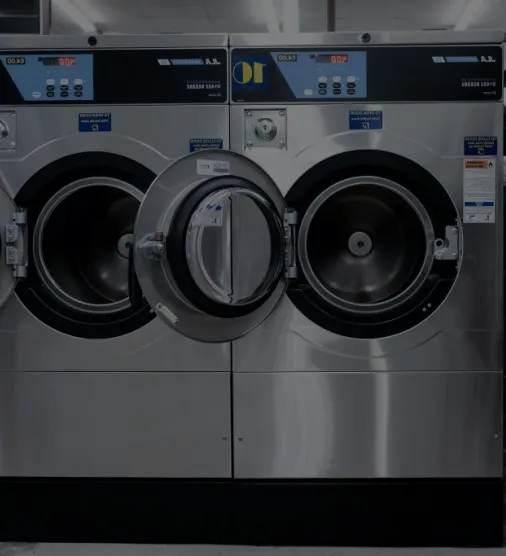Call Us Now: (587) 952 7077
Opening Hours: Mon - Fri: 7am - 7pm; Saturday: 7am - 3 pm
Call Us Now: (587) 952 7077
Opening Hours: Mon - Fri: 7am - 7pm; Saturday: 7am - 3 pm

You may find that the problem is as simple as changing your detergent, tightening a hose, or even leveling your appliance. If you need help with some issues, it’s best to know what you can and cannot do. You want to be doing laundry with your washer, so this guide will take you through the troubleshooting process. If you own a front-loading washer, a dirty filter on the drain pump is often to blame for issues like spinning, draining, and odor. You can start by cleaning the filter on your drain pump. This will remove any debris and lint. Use Maytag Product Help or your Owner’s Handbook for model-specific cleaning directions. There may be a better solution to your problem than the drain pump filters. Please continue reading for further troubleshooting.
If your washing machine doesn’t drain well or your loads come out wet, there could be a kink on the drain hose or a drain pipe too long.
Find the drain hose. This usually exits at the bottom of the washer, in the rear. Ensure the hose has no kinks, is crushed, or has a leak. Straighten the hose, if necessary, if it has been kinked. You can find more information about leaks in the section that follows. Also, check the drainpipe and drain hose for any obstructions. Consult your owner’s handbook for instructions on removing the drain hose.
Minimum and maximum drainpipe requirements are set for washers. For Maytag(r), drainpipes must be installed at a maximum of 96″, a minimum of 39″, or both. The washer will need more power to remove water if your drainpipe is too tall. In this situation, water can flow back into the washer. Consult the instructions that came with your washer to find out what model you have.
The slow spin cycle is used for gentle, delicate cycles or washing by hand to avoid fabric stretching. Slow spinning leaves even more water inside the load. Select a spin cycle with a high speed, such as the Normal Cycle, to remove water.
To thoroughly rinse the clothes and drain the water from your tub, a washer must be spinning correctly. Check if power has been lost, if you have a balanced load, and if the washer’s level is correct before calling for service.
If you have a washer that hasn’t reached full spin speed, the problem could be due to the failure of the power. In this case, start a drain and spin cycle.
The wash load should not be tightly packed and must be evenly balanced. Unbalanced large loads could lead to a slower spin speed and wet clothes by the end.
It is essential to make sure that the washer’s level. The load can become unbalanced in this case, causing the washer to spin improperly. This can also result in excessive noise and vibrating, especially when the washer is on a spin cycle.
Water should stay in the washing machine. It may be easy to fix if water leaks onto the floor. Try cleaning your door seal, tightening hose connections, or cleaning the drain filter.
Most likely, the problem is with the seal. Remove any dirt or debris by wiping it down with a moistened cloth. If the problem continues, gently remove the door seal to check for debris. Seals that are torn will need replacing. You may be using too much detergent. Use less detergent after you have run a cycle if soap bubbles appear on the door. Switching from regular detergent to High Efficiency (HE) can help reduce suds.
Ensure the fill and drainage hoses are securely attached to the washer. Also, check that the rubber washers are in place on the filling hoses and are not damaged or lacking. If necessary, tighten all parts.
Your new washer may make noises that you don’t recognize. Most of these noises are normal and don’t need to be repaired.
Some washer lids click when they lock in place to begin a cycle. You may also hear metal clothing parts like zippers and buckles touch the stainless steel basket. Empty your pockets before you put clothes in the washing machine. Coins or other objects can fall between the stainless steel basket and tub, requiring a service call.
You may hear the motor or pump constantly humming while the load is being washed. This can be accompanied by periodic gurgling and surging sounds as the water is removed from the washer during spin or drain cycles. After starting the washer, you may hear the hum from the spinning sensors.
Likely, your washer is not level or off-balance if you hear it rattle. If the load is tightly packed, remove some items. Balance a large item, such as a rug or a comforter.
The cause of washer odors is usually a need for more cleaning, an overly long wash cycle, or too much fabric softener and detergent. Avoid future odors by trying these simple things.
You may find that your washer has its own cleaning cycle or a recommended cleaner. Maytag recommends the Affresh (r) washing machine cleaner tablets1, but you can also use household items.
If you leave loads in the washer for too long, they can produce odors. Transfer loads immediately to the dryer or use a cycle that continues to tumble them after washing.
Most people overuse detergent. This can leave a residue or cause odors. You only need to use the cap as a measuring tool for a regular wash, which equals about one tablespoon of detergent. Filling the cap to the top could use up to 10 times more detergent than you need.